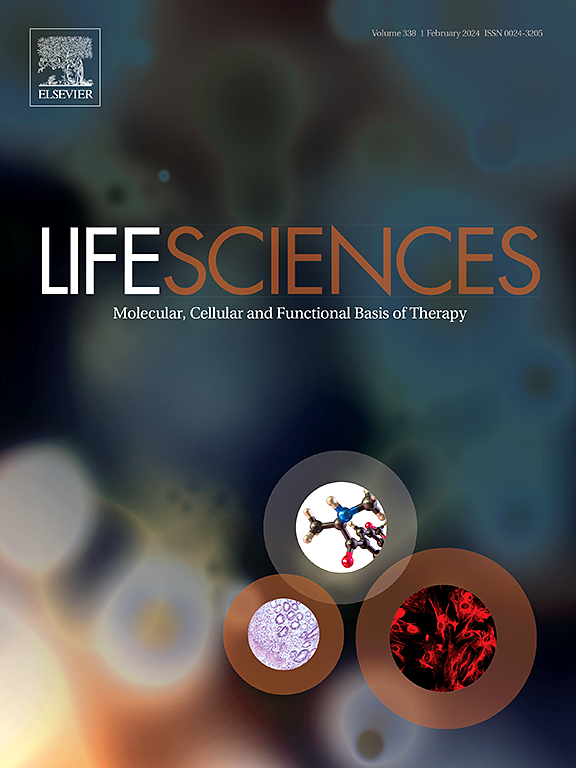Mouse liver blood flow is regulated by hepatic stellate cells in response to the sympathetic neurotransmitter norepinephrine
IF 5.2
2区 医学
Q1 MEDICINE, RESEARCH & EXPERIMENTAL
引用次数: 0
Abstract
Background
There is no clear information on the regulation of liver blood flow by the autonomic nervous system. We conducted this study to investigate whether quiescent hepatic stellate cells (qHSCs) regulate liver blood flow in response to the sympathetic neurotransmitter norepinephrine (NE).
Methods
qHSCs isolated from mice were cultured in Dulbecco's modified Eagle medium without fetal bovine serum for 1 day on collagen gel. NE-induced qHSC contraction was evaluated using the quantitative single-cell contraction measurement method that we had developed previously. For the measurement of liver perfusion pressure in situ, a buffer solution was perfused from the portal vein in mice.
Results
NE-induced a reversible contraction of qHSCs. This contraction was suppressed by the nonmuscle myosin II inhibitor blebbistatin, the myosin light chain kinase inhibitor ML-9, the Rho kinase inhibitor H-1152, the calmodulin inhibitor W-7, the store-operated calcium channel inhibitor YM-58483, and the IP3 receptor inhibitor xestospongin C. In contrast, the transient receptor potential C channel inhibitor SKF96365 did not affect the NE-induced contraction.
Conclusion
These results suggest that qHSCs contract in response to NE.
New & noteworthy
The present study provides direct evidence for the first time that norepinephrine (NE) induces a reversible contraction of isolated single quiescent hepatic stellate cells (qHSCs) and further suggests that the NE-mediated qHSC contraction participates in the regulation of liver blood flow in vivo.

小鼠肝脏血流量受肝脏星状细胞对交感神经递质去甲肾上腺素的调节。
背景:关于自主神经系统对肝血流量的调节,目前尚无明确的信息。我们进行了这项研究,以探讨静止的肝星状细胞(qHSCs)是否会对交感神经递质去甲肾上腺素(NE)调节肝脏血流做出反应。方法:从小鼠体内分离出的 qHSCs 在不含胎牛血清的 Dulbecco 改良 Eagle 培养基中在胶原凝胶上培养 1 天。使用我们之前开发的定量单细胞收缩测量方法评估 NE 诱导的 qHSC 收缩。为了原位测量肝脏灌注压,从小鼠门静脉灌注缓冲溶液:结果:NE诱导了qHSCs的可逆收缩。非肌球蛋白II抑制剂blebbistatin、肌球蛋白轻链激酶抑制剂ML-9、Rho激酶抑制剂H-1152、钙调素抑制剂W-7、贮存操作钙通道抑制剂YM-58483和IP3受体抑制剂xestospongin C均可抑制这种收缩:结论:这些结果表明,qHSCs 对 NE 有收缩反应:本研究首次提供了去甲肾上腺素(NE)诱导离体单个静止肝星状细胞(qHSCs)可逆性收缩的直接证据,并进一步表明 NE 介导的 qHSCs 收缩参与了体内肝血流的调节。
本文章由计算机程序翻译,如有差异,请以英文原文为准。
求助全文
约1分钟内获得全文
求助全文
来源期刊

Life sciences
医学-药学
CiteScore
12.20
自引率
1.60%
发文量
841
审稿时长
6 months
期刊介绍:
Life Sciences is an international journal publishing articles that emphasize the molecular, cellular, and functional basis of therapy. The journal emphasizes the understanding of mechanism that is relevant to all aspects of human disease and translation to patients. All articles are rigorously reviewed.
The Journal favors publication of full-length papers where modern scientific technologies are used to explain molecular, cellular and physiological mechanisms. Articles that merely report observations are rarely accepted. Recommendations from the Declaration of Helsinki or NIH guidelines for care and use of laboratory animals must be adhered to. Articles should be written at a level accessible to readers who are non-specialists in the topic of the article themselves, but who are interested in the research. The Journal welcomes reviews on topics of wide interest to investigators in the life sciences. We particularly encourage submission of brief, focused reviews containing high-quality artwork and require the use of mechanistic summary diagrams.
 求助内容:
求助内容: 应助结果提醒方式:
应助结果提醒方式:


